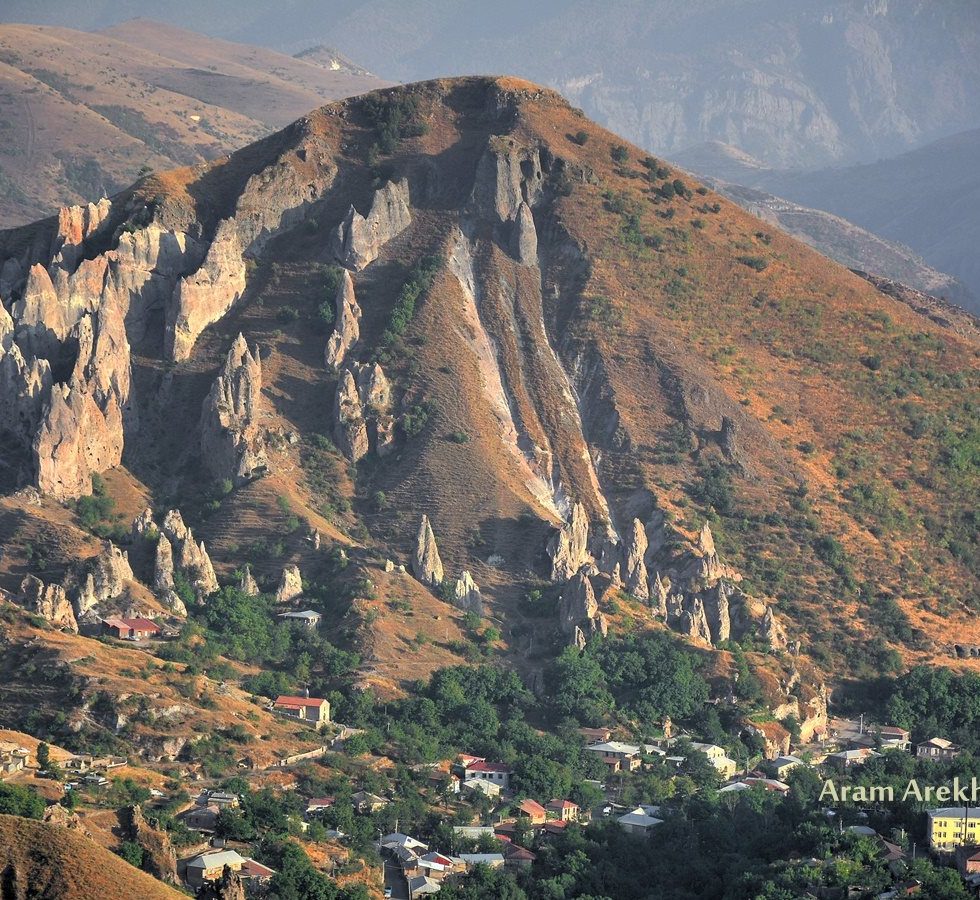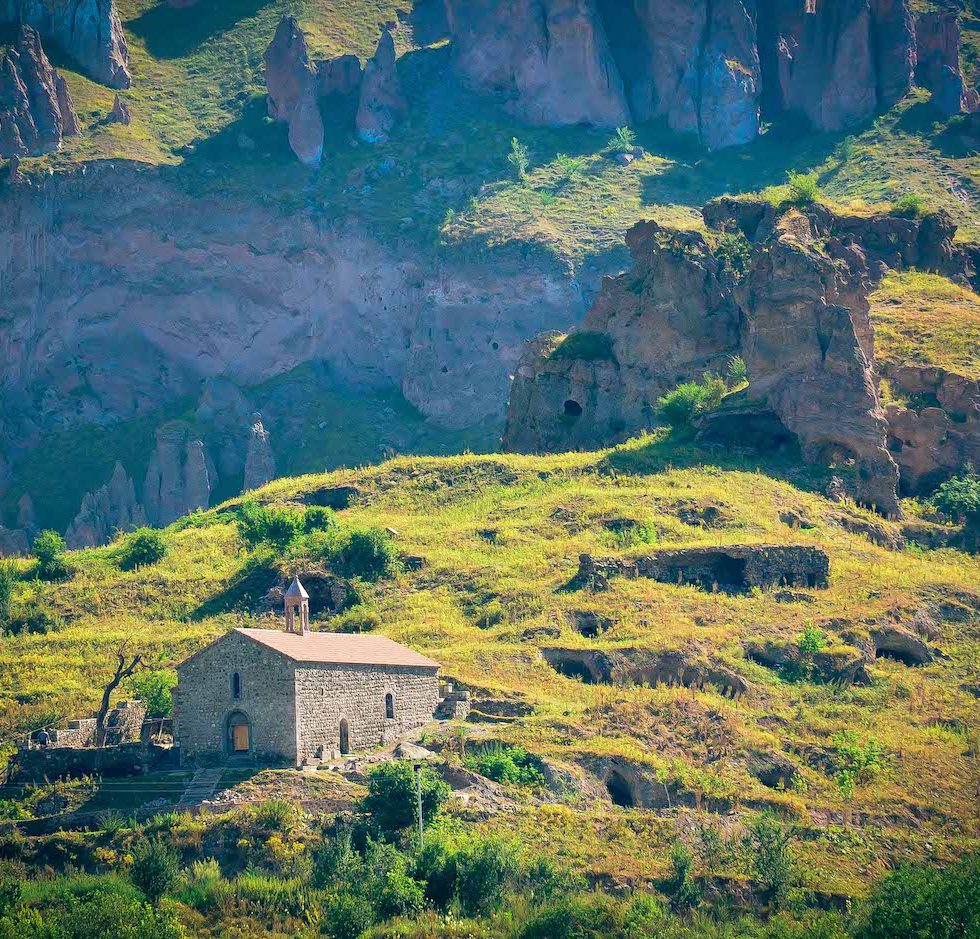
About Old Goris
Ancient Goris or the village of Goris is on the east side of Goris. (more…)

SURB HRIPSIME
History and Geography
It is known that in the XVI-XVII centuries in Syunik and Artsakh the melik families were distinguished by their influence. Due to certain rights acquired during the Turkish-Persian rule, these families play a decisive role in governing the region. The kingdoms in Syunik were the weighty forces, due to which the national liberation movements entered a completely qualitatively new stage. In addition to military and political activities, meliks also carried out construction work. Melik Ohan, a descendant of Melik Ohan Babur, who settled in Hin Goris, stands out for its construction activities. The latter was one of the prominent figures of the second half of the XVIII century, whose power extended to the villages of Kyores, Khot, Halidzor, Karahunj, Alighulishen, Maghanjugh and Kyuru. St. Hripsime Church of Hin Goris village (state index: 8.3.2.65), according to the peculiarities of the era and approximate calculations, dates back to the XVII century. Recently, however, a previously unknown inscription was unearthed to researchers on the south entrance of the church, which has been deciphered and covered. The four-line inscription has the following content: «ՅԻՇԱՏ(Ա)Կ Է ԵԿԵՂԵՑԻՍ ՊԱՂԸՐԻ ՈՐԴԻ ՄԵԼԻՔ ՕՀԱՆԻՆ ԹՎ(Ի)Ն ՌՄԻԵ». In fact, the inscription informs us not only in whose memory it was erected, but also the date of construction (1776). Melik Ohan himself initiated the construction of the church.
Structure
It is a single-aisle basilica building with two entrances on the west-south wall, four windows on the east-west wall and two on the south wall. There are two rooms attached to the north side of the building, one of which is inside the church. It served as a depository. Structure: It is a single-aisle basilica building with two entrances on the west-south wall, four windows on the east-west wall and two on the south wall. There are two rooms attached to the north side of the building, one of which is inside the church. It served as a depository. The entrance to the other room attached to the depository is from the outside, from the west side. The presence of a stove inside the room suggests that it probably served as a shelter for the clergymen. The walls of the church are built from rough basalt. Entrances and window frames, corner sections of walls, the only interior wall are built from beautifully worked basalt. In the late period it was plastered with lime mortar inside and out.










